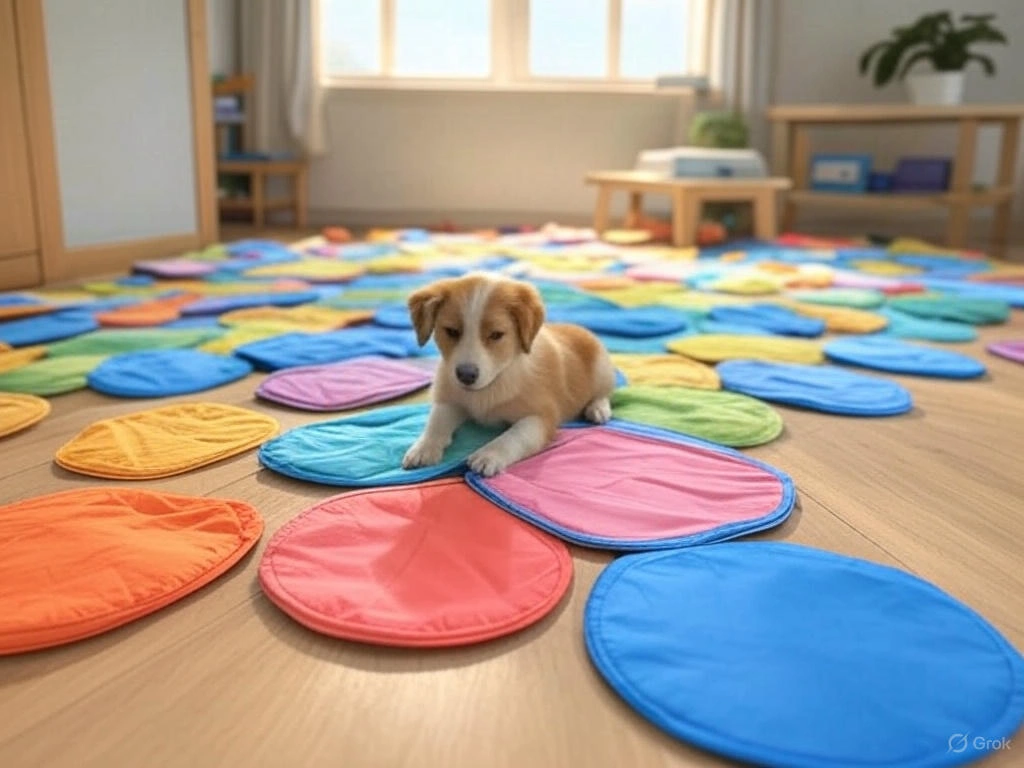How to Keep Puppy Pads in Place: Practical Solutions for Hassle-Free Potty Training
Discover practical solutions to keep puppy pads in place and make potty training easier, cleaner, and stress-free for you and your pup.
Potty training a puppy is a rewarding yet sometimes messy journey. One common frustration for pet owners is keeping puppy pads in place—those slippery pads can slide around, leading to accidents and disrupting your training progress. Whether your puppy paws at the pad, spins before peeing, or simply sends it skidding across the floor, we’ve got you covered with practical, evidence-based solutions to secure those pads and make training smoother.
Here’s how to keep puppy pads in place, with methods to suit every home and lifestyle.
Why Keeping Puppy Pads in Place Matters
Puppy pads are a lifesaver for housetraining, especially for young puppies, apartment dwellers, or those in colder climates where outdoor trips aren’t always practical. But when pads slip, they can confuse your puppy, create messes, and derail your training efforts. A stable pad reinforces the designated potty area, reduces cleanup, and builds your pup’s confidence. Let’s dive into the best ways to ensure your puppy pads stay put.
Top Methods to Secure Puppy Pads

1. Use Puppy Pads with Adhesive Tabs
For a quick and effective fix, opt for puppy pads with built-in adhesive tabs, like the Bulldogology Premium Puppy Training Pads. These pads feature sticky tabs on all four corners that adhere to the floor, preventing movement even if your puppy scratches or spins. The adhesive is designed to be removable without damaging most surfaces, though it may temporarily stick to wood floors. This ready-made solution is perfect for busy pet owners who want simplicity without sacrificing effectiveness.
Pros: Easy to use, prevents slipping, removable adhesive.
Cons: May stick slightly to wood floors, requires specific pad brands.
Tip: Ensure the floor is clean and dry before sticking the tabs for maximum adhesion.
2. Try a Puppy Pad Holder or DIY Frame
A holder or frame can keep your puppy pad securely in place while adding extra protection. Commercial holders, often with grates to deter chewing, are widely available and great for puppies who like to play with their pads. For a customizable and eco-friendly option, consider building a DIY frame using 1” PVC or ABS piping and vinyl fabric, as outlined in Pet Poo Skiddoo’s DIY guide. Here’s how to make one:
- Materials: Four 22” pieces of 1” PVC/ABS piping, four elbows, a 43”x43” piece of vinyl (mute grey), a 25”x25” piece of vinyl (green accent), and a 60” elastic cord.
- Steps:
- Cut four 22” pipes and connect them with elbows to form a square frame (use ABS for a sleek black finish).
- Cut 9” down and inward on each corner of the large vinyl piece, fold sides over, and sew flaps with a zig-zag stitch, leaving a 1” opening.
- Thread the elastic cord through the flaps, wrap it around the frame, tie a knot, and trim excess.
- Optional: Add a 22”x20” clear vinyl piece above for male dogs who lift their leg, thumbtacking it to the wall.
This setup not only locks the pad in place but also prevents urine runoff, making it ideal for dogs who pee near the edges. It’s reusable, environmentally friendly, and perfect for long-term use.
Pros: Durable, prevents runoff, reusable.
Cons: Requires DIY effort and materials.
Tip: Place a disposable pad on top for the first two days to help your puppy adjust to the new setup.
3. Secure with Double-Sided Tape
If your pads don’t have adhesive tabs, double-sided tape is a simple alternative. Apply strips to the pad’s corners and press it onto the floor. This works well on smooth surfaces but be cautious—it may leave residue or damage delicate floors like hardwood or tile. Test on a small area first to avoid surprises.
Pros: Quick and inexpensive.
Cons: Risk of residue or floor damage.
Tip: Use painter’s tape for easier removal on sensitive surfaces.
4. Place on a Non-Slip Mat
For an easy, low-cost solution, place your puppy pad on a non-slip mat or rug. The extra grip keeps the pad from sliding, especially on slick floors like wood or tile. For example, washable pads like GREEN LIFESTYLE Underpads can slide without traction, but a rubber-backed mat underneath solves the problem.
Pros: Affordable, easy to implement, works on various floors.
Cons: May not be as secure as adhesive or frames for very active puppies.
Tip: Choose a mat with rubber backing for the best grip.
Choosing the Right Method for You
Each method has its strengths, so consider your puppy’s behavior, your floor type, and how much time or money you’re willing to invest:
- Active puppies: Adhesive tabs or a holder/frame are best for pups who paw or spin.
- Smooth floors: Non-slip mats or adhesive tabs work well on wood or tile.
- Eco-conscious owners: A DIY frame with reusable pads is a sustainable choice.
- Quick fixes: Double-sided tape or adhesive-tab pads are ideal for minimal effort.
Keep in mind that some experts, like those at PetHelpful, suggest outdoor training over pads for long-term housetraining. However, if pads are your go-to, these solutions will make the process cleaner and less stressful.
Practical Tips for Success
- Monitor your puppy: Watch how they interact with the pad to ensure they’re comfortable with the new setup, especially with holders or frames.
- Clean floors: For adhesive tabs or tape, a clean, dry surface ensures better sticking power.
- Blend with decor: If building a frame, use ABS piping for a black color that looks sleek at home.
- Start small: Introduce one method at a time to avoid overwhelming your puppy.
Keeping puppy pads in place is a game-changer for stress-free potty training. Whether you choose adhesive-tab pads for convenience, a DIY frame for durability, double-sided tape for a quick fix, or a non-slip mat for simplicity, these methods will help maintain a clean, consistent training area. By securing your puppy pads, you’ll reduce messes, boost your pup’s confidence, and make housetraining a breeze. Try one of these solutions today and enjoy a smoother journey with your furry friend!


